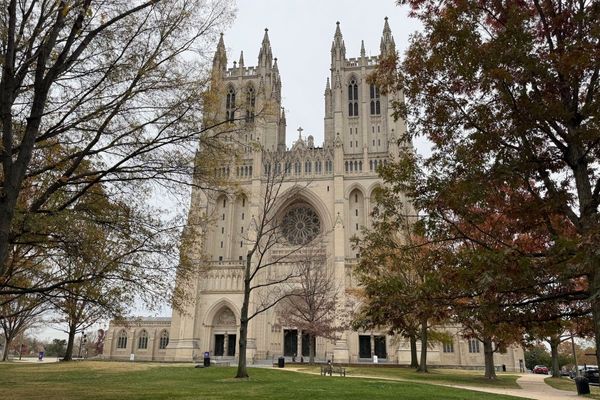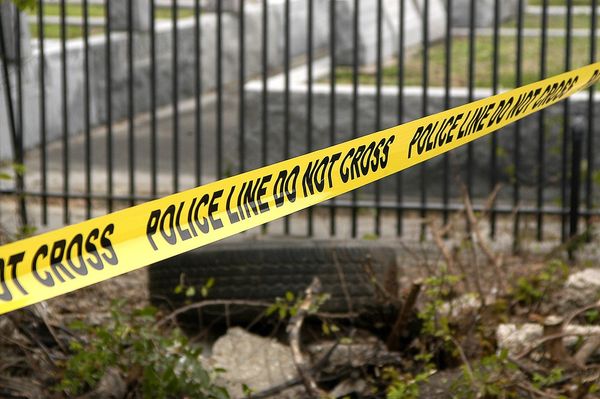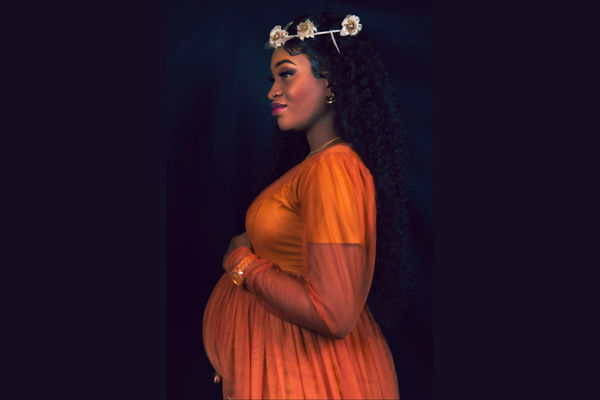
It had been three months without a peep, and the ecologist Matt Herring thought Gloria had perished. He had captured the elusive bird on 22 October 2023, on a property north of Balranald in New South Wales – the first Australian painted-snipe to be fitted with a satellite tracker.
But contact had been lost, and there was a sticky complication: Gloria’s tracker had been financed by a successful crowdfunding campaign. Herring started preparing an obituary for the avian pioneer for her species.
And then she reappeared – more than 1,000km north of where she was first captured, near Birdsville in outback Queensland. Herring guesses the tiny solar panel on the two-gram tracker may have been obscured by one of the bird’s feathers, causing the outage.
The second painted-snipe he’d caught, Marcelina, had made an even more epic journey from the same Balranald property. Captured on 3 January this year, she is now in Daly Waters in the Top End – a journey of more than 2,200km, as the painted-snipe flies.
The Australian painted-snipe is an enigmatic waterbird, most active from dusk to dawn. They hide in vegetation during the day, camouflaged by intricately patterned plumage. Almost all sightings are in summer, suggesting the species is at least partially migratory or nomadic.
Herring’s project, Australian Painted-snipe Tracking, aims to uncover where the birds go during winter. It’s becoming clear why, until now, no one knew. “When you look at where these two birds have gone, they’re some of the most remote parts of the country,” he said.
By tracing its movements, Herring hopes to help save one of our least-known and rarest species. The 2020 Action Plan for Australian Birds – which summarises the conservation status of all Australian avifauna – estimated there may be as few as 340 remaining in the wild.
However, Herring said that figure is likely to be underestimated. Consecutive La Nina years since the report was published have gone some way to replenishing water flows in the Murray-Darling basin, where the bird breeds.
But Herring cautioned that while overall numbers had probably been boosted, there had not been the dramatic jump in sightings recorded in 2011–2012, after the breaking of the millennium drought.
About 400 Australian painted-snipe were logged during that period. In the two years before the black summer bushfires, however, the species was recorded from just half a dozen locations, raising grave fears for their survival.
By comparison, between July and December last year, 61 birds were recorded from 25 sites, suggesting only a partial recovery. This was during a period Herring said “more people were out looking than ever”, after a post-Covid boom in birdwatching.
Herring said satellite-tracking the birds was the most efficient way of monitoring the specie’s movements. This in turn was helping to identify the painted-snipe’s habitat requirements, and where conservation efforts needed to be targeted.
The first six months of data provided by the movements of Gloria and Marcelina had pinpointed the locations of over a dozen individual wetlands used by the species across three states, plus the Northern Territory.
“That gives us the opportunity to work with those wetland managers, be they farmers or traditional owners or national park rangers,” Herring said. “It’s great to figure out their movement patterns, but the key is actually having sites to organise conservation for them.”
Remarkably, surveys conducted over summer showed Australian painted-snipe making extensive use of human-modified habitat, with a gathering of about 25 birds feeding in flooded wheat stubble on the property where Marcelina and Gloria were tagged.
The landowners, Peter and Sue Morton, are making dedicated changes of their own to benefit the birds, using designated environmental flows to help create a mixture of shallow water, mudflats and low cover the painted-snipe naturally favour.
“I do a lot of bird photography, so I had cameras everywhere set up,” Morton said. “I pumped a bit of water [into the channel] out of the firefighting unit and you wouldn’t believe it, the footage came back and there were 10 painted-snipe there, including Gloria.”
He said he was now working on fencing off the woodland. “I’m on a Cat loader now and I’ve got four blokes putting up an exclusion fence,” he said. “We’re putting the exclusion fence up to keep the stock out.”
The New South Wales Department of Climate Change, Energy, the Environment and Water recently announced it had partnered with the Commonwealth environmental water holder to manage the area specifically for Australian painted-snipe.
Herring said it was the first government-sponsored, targeted conservation initiative for the Australian painted-snipe. He said that it would also benefit other threatened species, including fish such as the southern pygmy perch, and frogs like the southern bell frog.
He said that crowdfunding for conservation work was a good way to engage people directly in species’ recovery – though he agreed it was a poor precedent, since the protection of nationally threatened species is a federal government responsibility.
But, he said, the plight of the Australian painted-snipe was too urgent to wait. “A lot of large-scale conservation and academic research funds can take six months or a year,” he said. “What are we going to do, just sit around and wait for new funding streams to be announced?”
• This article was amended on 4 August 2024. An earlier version stated Australian painted-snipes were fitted with radio transmitters; the birds were fitted with satellite trackers.







